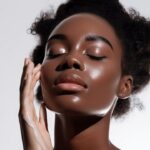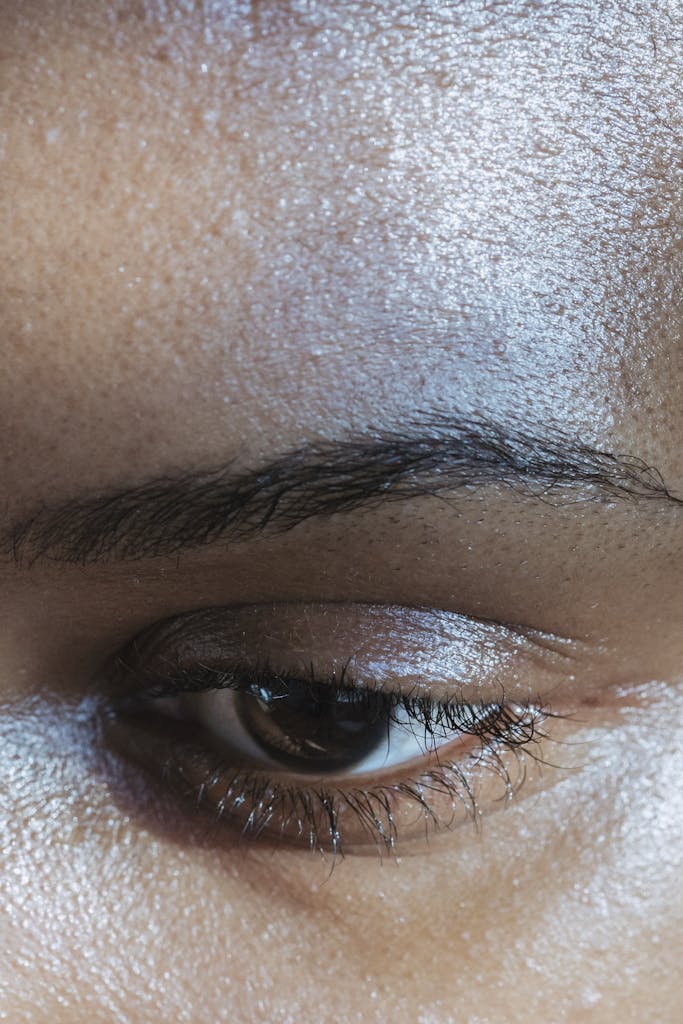
Causes Of Dry Skin In Babies And How to Care For It
April 22, 2024
What Is Slugging in Skincare And How To Do It Right
May 6, 2024If you have a hard time figuring out your skin type, it may be because you have two, a skin type called a combination skin. Despite how confusing that might sound, combination skin is one of the most common skin types. While a skincare routine for combination skin might sound complicated, it can be easily managed with a mix of products that control oil production but also hydrate and protect the skin barrier.
What Is Combination Skin?
Combination skin, as the name suggests, is a skin type that exhibits a combination of different characteristics, like dryness in some areas and oiliness in others. For example, it’s common to have an oily T-zone (the area that includes your forehead, nose, and chin) and dry cheeks. Those with this skin type may often face related concerns, such as tightness or sensitivity on the drier areas of their face, and clogged pores or breakouts on the oilier areas.
Because of your skin’s different (and often contrasting) needs, it can be tricky to figure out how to care for it properly, especially when you’re just starting. Ultimately, the key to caring for combination skin lies in finding balance.

How To Know If You Have Combination Skin
The easiest way to know if you have combination skin is to try the cleansing test. This test involves cleansing your face as usual, letting it dry (without any products on it), and then examining your skin. Dry skin will usually start to look and feel tight shortly after cleansing, while oily skin may start to appear shiny. Combination skin, meanwhile, will have both characteristics—meaning your cheeks may feel tight and dry, but your nose, forehead, and chin may have a bit of shine.
A second type of test for combination skin is the product test. If it’s challenging to find products that sit well on your skin; perhaps you find that mattifying products make your cheeks feel too dry, while dewier makeup leaves your T-zone looking overly shiny. This is often a sign that your skin is neither fully dry nor entirely oily, but a combination of both.
Causes Of Combination Skin
Nothing exactly causes combination skin (it’s genetic), but your skin can change with hormonal and seasonal shifts. Also, as you age, your skin may become drier and less oily as it reacts to hormonal changes. Some hormone-driven factors that can cause skin changes are periods and contraceptives.
Another factor that can cause combination skin is the presence of overactive oil glands in the T-zone. Your skin’s oil production is influenced by factors including hormones, stress, and the weather. While these factors are often out of your control, a proper skincare routine for combination skin can help keep your skin feeling balanced.

Skincare Routine For Combination Skin
Now that you know what combination skin is, you’ll be better equipped to care for it properly. The keys to caring for skin that’s oily or normal in some places – and dry in others is effective cleansing and hydration using products formulated to help maintain the skin barrier for ideal moisture levels while balancing combination skin for a fresher, healthier-looking complexion. Here are the steps you should aim to follow every day for balanced, healthy-feeling combination skin:
- Cleanse – Just as with any other skin type, your skincare routine should always begin with a fresh canvas that has been cleaned. It’s generally best to stick to a gentle cleanser that will remove pore-clogging dirt and debris without stripping your skin. Try Kanda Charcoal soap, which helps remove makeup and impurities while gently exfoliating your skin. Be sure to use lukewarm water when you lather up—hot water can strip your skin of its natural oils, leaving it feeling dry and tight.
- Tone – After cleansing, go in with the Kanda Revitalising Facial Toner and use a clean cotton round to swipe it onto your face. Allow the toner to absorb fully before continuing on to the next step in your skincare routine for combination skin.
- Treat – Using a serum treatment is a great way to add extra moisture to your skincare routine and address any skin concerns you may have (such as fine lines, wrinkles, or clogged pores). A dermatologist will be in the best position to recommend a serum to you. But generally, a hyaluronic serum is ideal for hydrating drier areas, while those containing vitamin C can help to promote a brighter, more even skin tone. And if you want to use both types of serums, feel free as hyaluronic acid and vitamin C make a great pairing.
- Oil – Dr skin needs moisture from oils and oily skin can benefit from hydrating oils. For the face, try the Kanda Facial Oil to help seal in moisture, restore the skin’s lipid barrier, regulate sebum production, provide vital nutrients to the skin, and also act as a protective layer from daily elements your face is exposed to. Then for the body, try the Kanda Lavender-Rose Body Oil after a bath or shower to help lock in moisture and prevent dryness. It has great moisturising properties and helps hydrate the skin from the outside.
- Moisturise – It’s been established earlier that moisturising is non-negotiable if you want your combination skin to look and feel its best. So, you need to apply a moisturiser, like the Cocoa Body Balm, after layering on your serums and oils, making sure to give the moisturiser adequate time to absorb before continuing to the next step in your routine.
- Eye cream – If your eye area is prone to dryness, you can take this time to apply an eye cream or serum which hydrates, brightens, and de-puffs for younger-looking eyes. Your dermatologist is in the best position to recommend an eye cream to you.
- Sunscreen – Much like the way moisturiser is necessary for all skin types, so is SPF. It is recommend to use a broad-spectrum sunscreen with an SPF of at least 30 every day (including on cloudy and cold days). Give your combination skin a little extra TLC by reaching for a sunscreen that offers skincare benefits like protection against UVA and UVB rays and absorbs quickly without leaving behind a white cast on our brown skin.
Additional Tips For Caring For Combination Skin
- Keep in mind that SPF is only one part of proper sun protection. Per the FDA, you should also avoid direct sun exposure during the midday hours, wear protective clothing, and stick to the shade when possible.
- If you’re working with combination skin plus frequent breakouts, try using a cleanser that contains salicylic acid, double-cleanse at night if you wear makeup, and use a toner to remove excess oil and help fight blackheads and blemishes.
- Men’s skin is thicker and it also has a rougher skin texture, so if you’re a man with combination skin, using a toner in your cleansing step can help clear away impurities further and soothe your skin.
- Over-cleaning on a dry area could result in exacerbation of dryness flaking and broken skin, while not cleansing properly on very oily areas can result in breakouts and dead skin build-up. So strike a balance while cleansing your combination skin.
- Keep a diary and see a dermatologist or an aesthetic physician for a skin mapping service as the combination skin can be very difficult to manage and skin mapping can help you formulate two skincare routines depending on the needs of the different areas.
The best way to get results from your skincare routine is to be consistent. Once you get the hang of it, you’ll almost be able to do it in your sleep.


